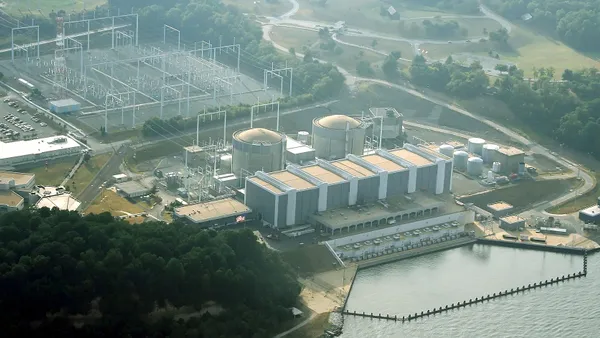Utilities are spending more and more money on operations and maintenance (O&M). According to the U.S. Energy Information Administration (EIA), distribution utilities spent $14.6 billion on O&M in 2019 for everything from overhead line maintenance to vegetation management and storm-related repairs. According to EIA, transmission system O&M is also on the rise, with utilities devoting $16.5 billion to maintenance and repairs in 2019, an increase of 7% compared to 2018.
Utility attention to O&M makes sense. Many utilities need to pay attention to speedy and effective maintenance of their existing systems because so much of the infrastructure is worn and outdated. The American Society of Civil Engineers' most recent Infrastructure Report Card gave the energy system a C-, due largely to the fact that a significant portion of the equipment is well past its 50-year life expectancy.
O&M is also essential for utilities to reduce the number and length of power outages. Customers have little patience for outages, and regulators are not shy about fining utilities that have unnecessary blackouts.
Technology and improved processes increase performance
While it makes sense for utilities to devote resources to O&M, many are also looking for ways to improve O&M effectiveness while simultaneously slashing its cost. "Utilities are actively looking to save time and money through technology and better processes," said Scott Baur, a solution engineer for HSI, a company that develops and implements safety management systems and training programs for various industries, including the power sector. "A big driver for that is shareholders demand lower costs because that directly improves their bottom line."
Many utilities are increasingly turning their attention to leveraging technology and better processes to improve worker safety and equipment maintenance. It's a focus of attention because there is significant room for improvement.
Why? Many utilities currently rely on manual, paper-based and disconnected systems to document and monitor everything from simple inspections to equipment repairs to safety incidents that result in an injury. "I've walked into a safety manager's office, looked in the corner and seen a two-foot-high stack of paper," recalled Baur. "I asked what it was, and they told me, ‘that's our vehicle inspections I need to go through.'"
In most cases, valuable information in all those stacks of paper was eventually entered into a spreadsheet or database. But the amount of time and labor required is a costly expense and limits the utility's ability to collect data uniformly and then analyze the information they collect to prioritize action or identify trends. "Maybe there's a vehicle that constantly gets into rear-end accidents during certain kinds of weather. Or maybe there is a piece of equipment you have to send someone out to repair frequently that really should be replaced," Baur said. "That information may be trapped in all that paper."
Efficiency and transparency in Arizona
One utility that wanted to improve its operational efficiency and transparency was Pinal County Electrical District No. 3 (ED3) in Maricopa, Arizona. ED3 wanted to move away from having its field staff document inspections, incidents and other observations using paper forms and freehand notes they would then have to transcribe and enter into spreadsheets.
To transition from this manual and paper-based approach, ED3 opted to implement HSI's Safety Management System (SMS), which provides a scalable and customizable digital platform for recording everything from safety incidents and maintenance requests to work orders and job completions.
"They came to us with a clear vision of their needs, one of which included their end-user experience," Baur said. "The field workers already used technology like mobile devices and computers to do many other things. They wanted to use those same devices to eliminate all the paper they were using and electronically collect actionable data."
That's exactly what the SMS system allowed. For example, like all utilities, ED3 is focused on reliability as a primary driver of customer satisfaction. Before implementing its new system, ED3 personnel who, for example, found a problem while reading a meter would write a paper report, take photos and upload everything to a spreadsheet – tasks that took about two hours each day for each worker and introduced plenty of opportunity for error. It was the coordinators' job to then go through all the uploaded reports and prioritize work orders, potentially revisit the site, and order parts. It often took a week to start a work order.
The ability to leverage technology to upload information from the field to a common platform has accelerated response times. "Because the information from inspections goes directly into the HSI SMS, our inspectors spend less time on data entry and more time on field inspections or other important tasks," said Joshua Reilly, ED3's safety specialist/field asset inspector. Similar efficiencies and benefits have been seen in how ED3 maintains equipment and complies with safety regulations.
After a year of use, ED3 says the SMS saves hundreds of work hours each month, work order times have been sliced in half, and much more time can be devoted to analyzing data rather than simply entering it. "We're to the point now where we have enough data in the HSI SMS to do analysis on incidents and track trends to see what we're doing well and where we can improve," Reilly said.
Utilities will always have O&M challenges. Whether it's diagnosing safety or operations issues or detecting and updating technology and equipment, the good news is organizations have viable options to save time and labor to overcome those challenges.










